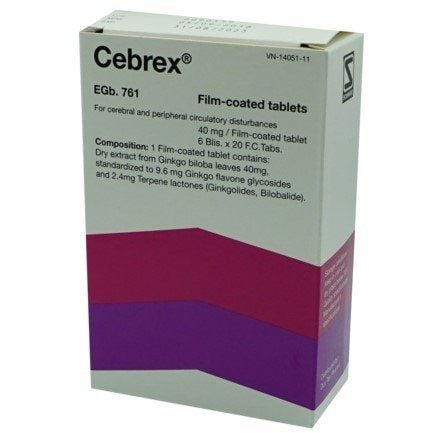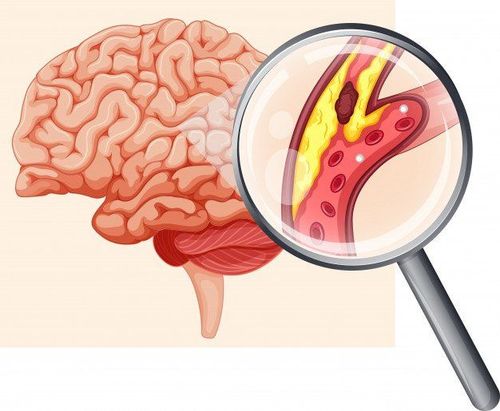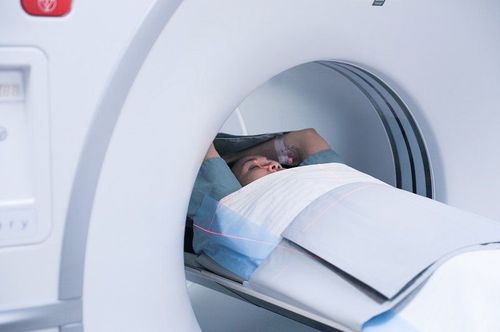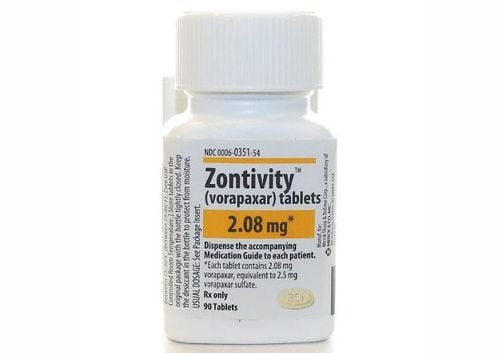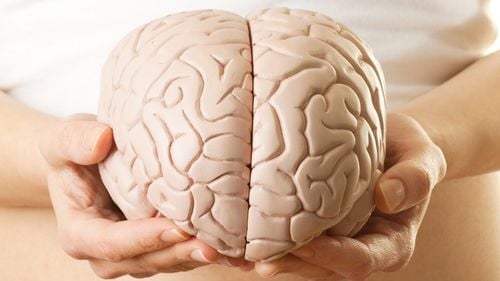This is an automatically translated article.
The article was professionally consulted by MSc Huynh An Thien - Department of Medical Examination and Internal Medicine, Vinmec Danang International General Hospital.Cerebral hemorrhage due to cerebral vascular rupture has a high mortality rate, the recognition for early treatment helps to prevent the size of the hematoma from increasing and to reduce the dangerous complications of the disease.
1. What is a brain hemorrhage?
Hemorrhagic stroke is a type of stroke that occurs when blood spills into brain tissue and causes brain damage. When blood from the injury irritates brain tissue, it causes brain edema, where the blood collects in a mass called a hematoma. This condition increases pressure on surrounding tissues, eventually killing brain cells and rupturing brain vessels.
Patients with severe cerebral hemorrhage have a high mortality rate, the prognosis depends mainly on the size of the hematoma in the brain. The larger the size, the higher the patient's risk of death and disability. Usually, treatment is only aimed at keeping the hematoma from increasing in size and reducing complications. A small number of patients with intracerebral hemorrhage are reversible and able to walk, and the majority of patients are permanently disabled.
2. Causes of brain hemorrhage
Cerebral vascular malformation is the main cause of cerebral hemorrhage. It is congenital and can only be diagnosed when symptoms are present. People with head injuries or excessive physical activity, too much stress. People with high blood pressure often weaken the walls of blood vessels, if not treated, it will cause brain hemorrhage. Aneurysms, caused by weakening of the blood vessel walls, can burst and bleed into the brain, leading to a stroke. In people with amyloid angiopathy, this condition can cause subtle microbleeds before causing major bleeding. People with blood clotting disorders People with liver disease, brain tumors People with a history of obesity, sedentary lifestyle, high blood cholesterol. People working in hot weather suffer from heat stroke.
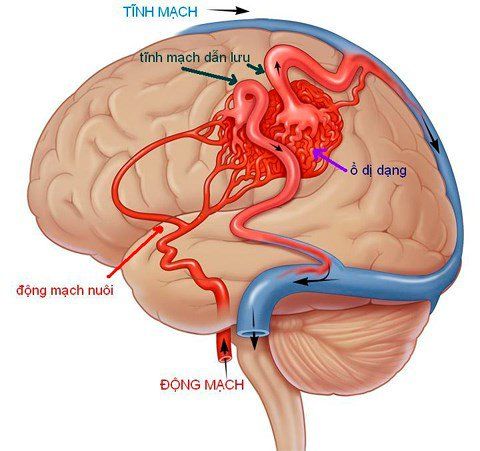
3. Complications of cerebral hemorrhage
After cerebral hemorrhage, up to 92% of people have motor complications, 68% have moderate and mild sequelae and 27% have severe complications. The most common hemorrhagic complications include:
Hemiplegia: According to statistics of medical experts, more than 90% of people with cerebral hemorrhage suffer from this complication after recovery. This is the most severe type of cerebral hemorrhage sequelae, making the patient unable to take the initiative in his life, making it difficult to walk, difficult to move the weight. Psychological disorders: Patients often have psychological disorders because they have just experienced a great mental shock, always feel lonely, sad, and useless when they find themselves sick lying in one place, having to depend on their loved ones. care. Language disorders: People with cerebral hemorrhage will have a distorted mouth, not as clear as when healthy, some sounds cannot be heard or the last vowel is lost. In severe cases, the patient's language ability is only babbling like a child learning to speak. Cognitive disorders: Like memory loss, lethargy, confusion, lethargy, not remembering what has happened for a period of time. Swallowing disorders: People with cerebral hemorrhage when swallowing are easy to choke, difficult to swallow, unable to chew... Respiratory disorders: Patients easily lead to respiratory failure, tongue drop, sputum choking... causing pneumonia . Urinary incontinence: This is the most common complication for patients with cerebral hemorrhage, causing the patient to experience many inconveniences in life, irritability, fatigue and frustration. In addition to the complications of cerebral hemorrhage, patients also face the risk of disease recurrence, which causes many other consequences and the cost of treatment is many times higher.
4. Identification signs

Brain hemorrhage has a very sudden and intense onset, which can be immediately after psychological and physical exertion or during normal work and activities, even when the disease breaks out in sleep or when just woke up. Some signs to recognize the disease are as follows:
Sudden severe headache, weakness in limbs and falling to one side or paralysis of an arm, a leg. I can't speak, I can't speak clearly, my face is distorted, my mouth is also distorted. Body sweating, urinary incontinence, irregular breathing, irregular heartbeat and blood pressure, fever. Swallowing disorders such as difficulty swallowing, easy swallowing, choking, not chewing. Memory declines quickly, forgets or completely forgets things quickly... As soon as the above signs are detected, it is necessary to quickly take the patient to the hospital for support because the person with a brain hemorrhage should be treated. emergency care within 3-4 hours after the onset of the disease to reduce the danger level and limit complications due to the disease.
5. Methods of diagnosis and treatment of cerebral hemorrhage
Diagnostic method In addition to clinical manifestations of hemorrhagic disease, doctors will give patients a CT scan of the brain or an MRI of the brain. These two methods are essential to confirm the diagnosis of ICH and rule out ischemic stroke... CT and MRI are both considered as first-line imaging options for acute assessment and diagnosis. save brain hemorrhage. However, CT should be performed in patients with contraindications to MRI.
Treatment of brain hemorrhage Treatment of cerebral hemorrhage depends on the location, cause and extent of the bleeding. Your doctor may perform surgery to reduce swelling and prevent bleeding. Depending on the location of the clot, your doctor will perform a craniotomy or radio-guided aspiration. Certain medications may also be prescribed, including pain relievers, corticosteroids or diuretics to reduce swelling, and anticonvulsants to control seizures.
The patient will need long treatment to overcome the symptoms caused by brain damage. Depending on symptoms, treatment may include physical therapy, speech therapy, and some other therapy.
6. How to control hemorrhagic disease?
Brain hemorrhage is a very dangerous disease, leaving many complications, to control the disease you should:
Treat hypertension through diet, exercise and using drugs as prescribed by your doctor. doctor. Say no to alcohol, tobacco, and substances like cocaine that can increase the risk of brain hemorrhage. Control diabetes, liver disease, heart disease,... Build a healthy lifestyle. Go for regular check-ups at least every 6 months to know your health status. The technique of treating cerebral artery thrombosis has been applied at Vinmec Da Nang International General Hospital to increase the chances of treating patients with cerebral infarction in particular and thrombotic diseases in general.
Techniques are performed by experienced doctors:
Dr. Ton That Tri Dung Ths.Bs Huynh An Thien Ths.Bs Nguyen Thanh Nam . The technique is indicated for the following patients:
Subarachnoid hemorrhage due to ruptured cerebral aneurysm Infarction due to large cerebral artery occlusion. Brain haemorrhage due to brain vascular malformations The outstanding advantage of that method is the use of MRI 3.0 with silent technology and 640-sequence CT scanner for thrombus intervention techniques. cerebral arteries.
Please dial HOTLINE for more information or register for an appointment HERE. Download MyVinmec app to make appointments faster and to manage your bookings easily.





